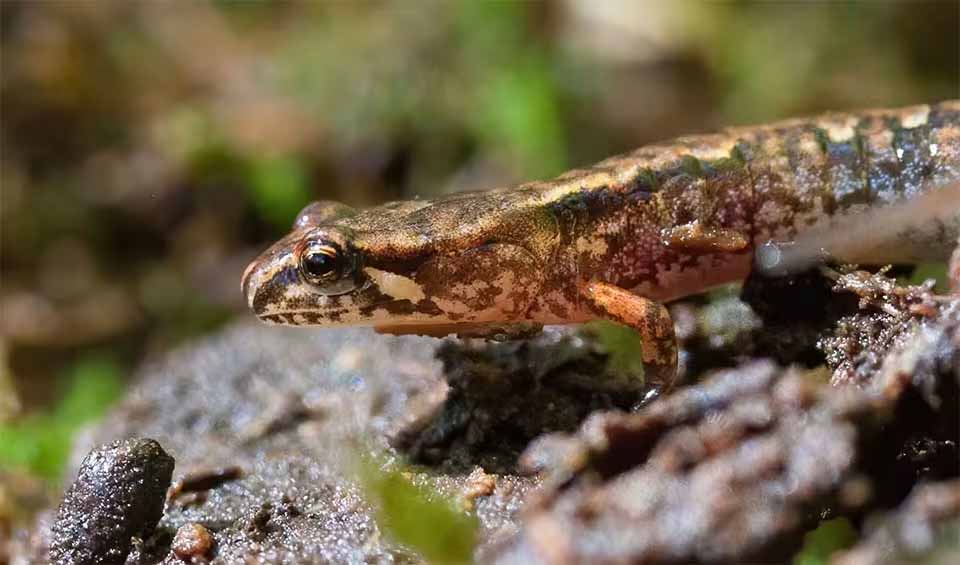Desmognathus – Dusky salamanders
Native to Canada and United States where they are known as dusky salamanders
This group of stout, medium-sized amphibians is known for their distinctive features, habitat preferences, and unique adaptations within the world of salamanders. They exhibit variable brown coloration, with individuals displaying shades ranging from light to dark brown.
One of their striking characteristics is their translucent belly, which often features a “salt and pepper” patterning, adding to their visual appeal. Dusky salamanders possess a flattened tail with a knife-like top edge, a distinguishing feature that sets them apart from other salamander species. The base of their tail can vary in color, displaying shades of olive, yellow, or bright chestnut.
Like many amphibians, they primarily “breathe” by absorbing oxygen through their skin. This adaptation allows them to respire efficiently through their moist skin, making them well-suited for their preferred habitats. Additionally, members of the Desmognathus family possess a specialized groove that runs from the nose to the upper lip. While the exact function of this groove is not fully understood, it is believed to play a role in enhancing their sense of smell, which is essential for locating prey and navigating their environments.
Dusky salamanders are often found in specific habitats, particularly in the shaded streamside areas of moist woods. These habitats provide the ideal combination of moisture and shelter for these amphibians, allowing them to thrive. However, in some regions, the removal of trees and deforestation pose a significant threat to their populations.
Species in this genus
Pygmy salamander
One of the smallest and most terrestrial of all salamanders


